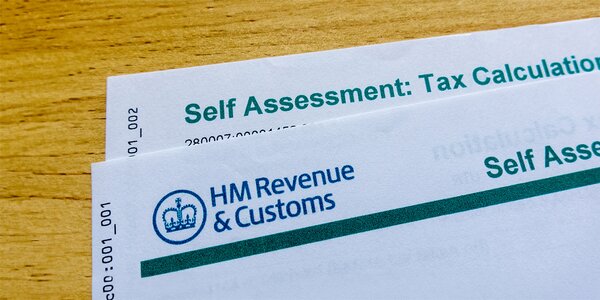Let’s Break This Down Together…
Making money from your content is exciting, but when it comes to tax, things can get confusing fast.
From brand deals to tips, subscriptions to affiliate sales, HMRC now has clear rules for creators and influencers in 2025, and knowing them could save you money (and stress).
Pie tax‘s creator-specific dashboard makes tracking multiple income streams effortless, Or if you’re just here to get to grips with it all, let’s break it down!

How UK Tax Rules Work for Creators and Influencers in 2025
The basic rule hasn’t changed, if you earn money from creating content, you need to pay tax on it.
Most influencers and self employed individuals fall under these rules, as they typically generate income through various platforms and are responsible for their own tax obligations.
But what has changed is how HMRC categorises different types of creator income.
For 2025, the personal allowance sits at £12,750. If your total income from all sources combined is less than this, you won’t pay income tax (though you might still need to register and file).
Once you cross that threshold, you’ll pay 20% on earnings up to £50,270, 40% on anything between £50,271 and £125,140, and 45% on earnings above that.
The big change for 2025 is the new digital content creator code on Self Assessment forms. Self employment status is common for creators, and this code helps HMRC identify self-employed individuals in this sector, making it easier to apply the correct tax rules.
National Insurance contributions are separate from income tax. In 2025, you pay Class 4 NI at 9% on profits between £12,570 and £50,270.
Getting Registered as a Self-Employed Creator
If your content creation earns more than £1,000 in a tax year, you need to register as self-employed with HMRC. The most common business structure for creators is as sole traders. This £1,000 is your Trading Allowance, a tax-free buffer for small earnings.
Registration is straightforward through the HMRC website. You’ll need to do this by 5 October following the tax year in which you exceeded the threshold. If content creation is your only income, you still need to register if you exceed the allowance.
Once registered, you’ll need to complete a Self Assessment tax return each year. The deadline is 31 January following the tax year (which runs April to April).
Many creators wonder if they need to register when they receive income above the threshold, including free products. The answer depends on whether you’re contractually obliged to post about them.
If yes, that’s taxable income valued at the retail price of the items. I learned this the hard way when I received £3,000 worth of tech products and faced an unexpected tax bill.

Claiming Expenses to Reduce Your Tax Bill
Here’s the good news, you can deduct business expenses from your taxable income. For creators, this includes a surprising amount of what you spend.
Camera equipment, lighting, microphones, and computers used for content creation are all allowable expenses. For items used partly for personal use, you can claim a percentage based on business usage.
Software subscriptions for editing, scheduling, and analytics tools are fully deductible. So are platform fees and commission charges from agencies or management.
Home office costs can be claimed too. You can either use HMRC’s simplified flat rate (about £6 per week in 2025) or calculate the actual costs based on the percentage of your home used for business. To be allowable, these expenses must be incurred wholly and exclusively for business purposes.
Travel costs for filming, attending events, or meeting clients are deductible when the primary purpose is business. Keep detailed records of mileage or public transport costs.
Props, costumes, and products purchased specifically for content creation count as legitimate expenses. Just make sure you can prove they were necessary for your business.
Setting Up the Right Business Structure
As your income grows, you might wonder whether to remain a sole trader or set up a limited company. The vast majority of creators start as sole traders, handling their taxes through self-assessment. This decision can significantly impact your tax bill.
For creators earning less than £50,000, staying as a sole trader is often simpler and more tax-efficient. You’ll pay income tax and National Insurance on your profits.
Higher earners might benefit from incorporating. Limited companies pay corporation tax (19% in 2025) on profits, and you can then take money out as a mix of salary and dividends.
Dividend tax rates in 2025 are lower than income tax rates: 8.75% (basic rate), 33.75% (higher rate), and 39.35% (additional rate), after a £1,000 dividend allowance.
The optimal setup varies based on your circumstances. Choosing the right structure supports sustainable growth for your creator business. Many successful creators use a limited company structure once they consistently earn above £40,000-£50,000.

Platform-Specific Tax Considerations
Different platforms have different payment structures, which affects how you report income. Many creators use online platforms to earn money, and it is important to declare all income received from these sources for tax compliance. Understanding these distinctions is crucial for accurate tax reporting.
YouTube and Twitch income is typically paid after the platforms have already deducted their commission. You report the amount you actually receive, not the gross revenue your content generated.
For brand deals and sponsorships, you’ll report the full amount paid to you. If you’re VAT-registered, remember to charge VAT on top for brands based in the UK.
Subscription platforms like Patreon and OnlyFans have their own payment structures. Some withhold tax at source for international creators, while others don’t.
Merchandise sales, including selling goods through online platforms, count as a separate trading activity if substantial and are taxable if your income exceeds the £1,000 trading allowance. You’ll need to track inventory costs, shipping, and returns differently from your digital content income.
Some creators may also earn rental income from letting out property or rooms via online platforms, and this income must also be reported for tax purposes.
Foreign Income and Taxation for UK Creators
If you’re a UK creator earning income from abroad, whether it’s ad revenue from international platforms or payments from overseas brand partnerships, this foreign income is still subject to UK tax rules.
You must report all foreign income on your self assessment tax return, regardless of where the money originates.
The tax implications of foreign income can be complex, especially if you’re also taxed in the country where the income was earned. In many cases, you may be able to claim relief under double taxation agreements to avoid being taxed twice on the same income.
It’s important to keep thorough records of all foreign earnings, including invoices, receipts, and any tax paid overseas.
By understanding your tax obligations around foreign income, you can ensure you’re paying the correct amount of tax and taking advantage of any reliefs available. Always check the latest HMRC guidance on foreign income and seek advice if you’re unsure about your specific situation.

Record-Keeping Requirements for Creators
Good record-keeping is essential for creators and influencers to stay on top of their tax affairs. You’re required to keep detailed records of all taxable income, including payments from brand partnerships, ad revenue, sponsored content, and any foreign income.
This also extends to receipts and invoices for business expenses, as well as documentation for allowable business expenses and gifted products.
Accurate records help you claim all the allowable business expenses you’re entitled to, reducing your overall tax liability.
For example, if you receive gifted products, you’ll need to record their value and the reason you received them. Similarly, keep track of all income sources and related expenses to ensure your tax return is complete and correct.
HMRC recommends keeping these records for at least five years after the 31 January submission deadline of the relevant tax year. Staying organised not only makes your self assessment tax return easier but also protects you in case of an HMRC enquiry.
VAT Considerations for Growing Creators
Once your taxable turnover exceeds £90,000 (the 2025 threshold), you must complete the vat registration process. This involves registering with HMRC, adding 20% VAT to your invoices to UK clients, and filing quarterly VAT returns.
Many creators worry about hitting this threshold, but it’s not always bad news. Being VAT-registered allows you to reclaim VAT on business purchases. You can also reclaim input tax on allowable business expenses, reducing your overall VAT liability.
The Flat Rate Scheme can simplify VAT for creators. Instead of tracking VAT on every purchase, you pay a fixed percentage of your turnover (often around 13% for digital services).
International audiences create interesting VAT situations. Services to consumers outside the UK are generally outside the scope of UK VAT.
Digital products (like presets, templates, or e-books) have special VAT rules. The “place of supply” is where your customer is located, potentially creating obligations in other countries.
It’s important to ensure compliance with VAT rules by maintaining accurate vat registration, proper reporting, and meeting all HMRC requirements.
Making Tax Digital: Compliance for Creators in 2025
From 2025, the Making Tax Digital (MTD) initiative will apply to all creators earning income from digital platforms. This means you’ll need to submit quarterly digital tax returns using compatible software, rather than relying on paper forms or manual spreadsheets.
MTD is designed to streamline tax compliance and make it easier to manage your tax obligations in real time. As a creator, you’ll need to keep digital records of all income and expenses, ensuring everything is up to date and accurate. Using MTD-compatible software will help you stay compliant, avoid penalties, and ensure you’re paying the correct amount of tax.
If you earn income from multiple digital platforms, MTD can actually simplify your tax affairs by keeping everything in one place. Make sure you’re prepared for these changes by choosing the right software and understanding your new reporting requirements for the 2025 tax year.
Final Thoughts
The 2025 tax landscape for UK creators includes significant changes that require careful planning and record-keeping. Staying informed is essential.
Staying compliant while maximising legitimate deductions depends on understanding your specific content creation business model. Each platform has unique considerations.
The digital economy continues to evolve, and so will HMRC's approach to taxing it. Regular reviews of your tax strategy will help you adapt to new rules.
Pie tax: Simplifying UK Tax Rules for Creators and Influencers 2025 Tax
Getting your taxes right shouldn't take time away from your creative work. Pie tax understands the unique challenges creators face with multiple income streams.
Pie tax, the UK's first personal tax app, offers creator-specific categories that automatically identify platform payments and industry-specific expenses. No more guessing which category fits your YouTube income.
Our real-time tax calculator shows exactly what you'll owe as you earn across multiple platforms, eliminating year-end surprises. Track everything from one dashboard.
Want to see how it works? Explore the Pie tax app if you'd like to save time on your taxes next year.











